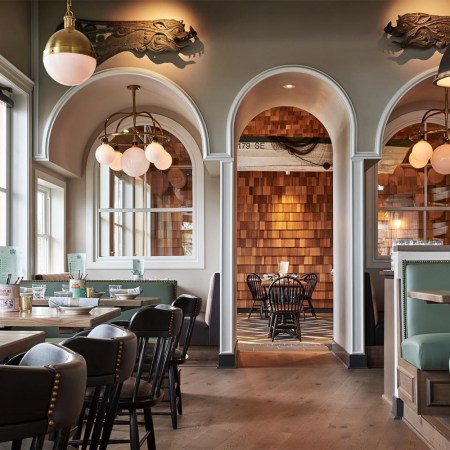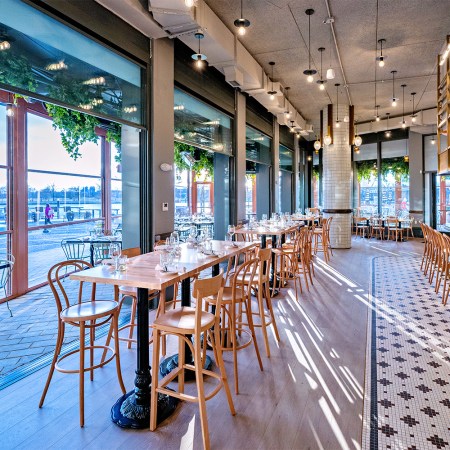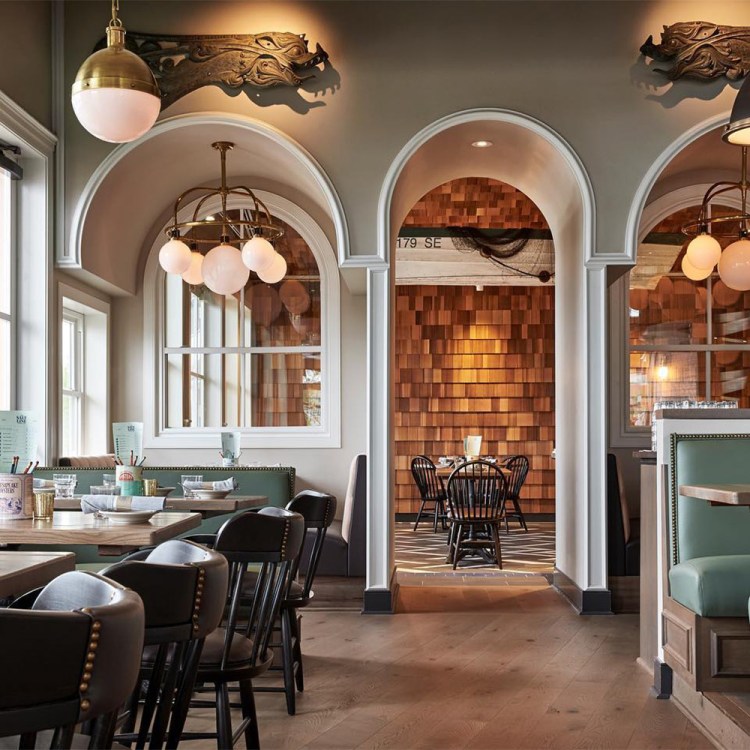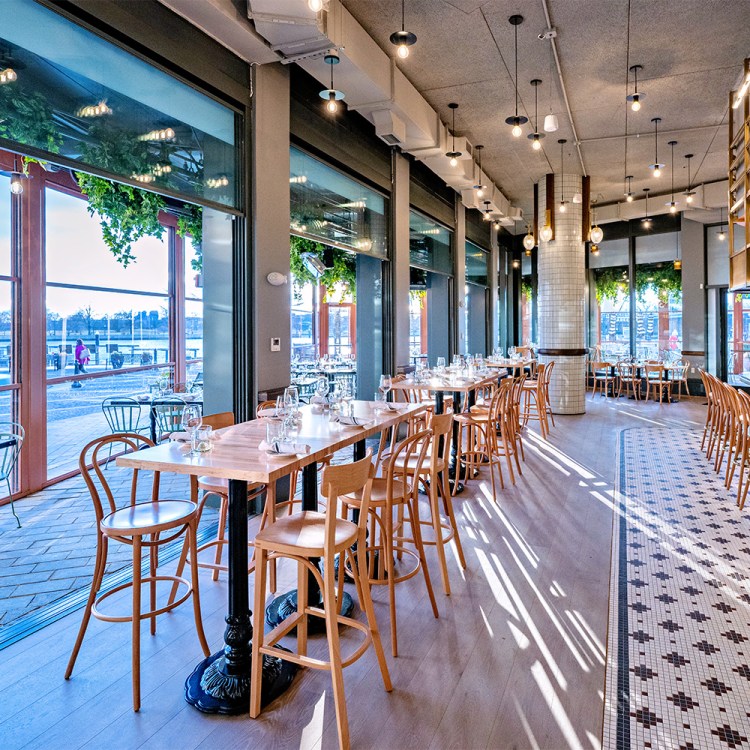We’ve been sticking close to home for a long time now — but the world is opening up. If you’re ready to head out on the open road, we have three destinations for you, offering maximum exploration from along some of the country’s most beautiful scenic byways — with scrapple, sunflowers and sunset sails for the willing.

Lancaster, Pennsylvania (2-hour drive)
Put this one at the top of your list: Lancaster is never more beautiful than when its orchards bloom, which is right about … now. If you went as a kid, it was probably to explore flea markets and Pennsylvania Dutch culture (that scrapple won’t eat itself) — and if you haven’t been back, you might be surprised to discover all of the above, plus a community transformed and enriched by immigrants from Africa, the Middle East and elsewhere.
Consider splitting off of I-83 before you hit York and nosing along the country roads — or make a loop by first heading west to Gettysburg, then going back east. Just stay south of Route 30 until you’re ready to get where you’re going.
Along the way: Take a detour between D.C. and Lancaster to stop at historic Gettysburg National Cemetery, site of Abraham Lincoln’s famous Gettysburg Address and the final resting place of more than 3,500 Union soldiers. The nearby Michaux State Forest is also worth a stop, boasting more than 85,000 acres of what is considered Pennsylvania’s “cradle of forestry.” The scenic Sunset Rocks spur off the Appalachian Trail can be accessed from the town of Pine Grove Furnace, also home to the Appalachian Trail Museum, which is housed in a charming old mill.
Once you’re there: If you’re bringing kids, they may very well enjoy a tour of an authentic working Amish dairy farm (with or without a hayride) or The Amish Farm and House, a museum featuring outbuildings like a blacksmith shop and one-room schoolhouse.
You may need a drink after all that touring. In downtown Lancaster, Lancaster Brewing is home to the Shoo-Fly Pie Porter and Baked Pumpkin Ale; Meduseld Meadery has made the exceptional decision to pair mead-drinking with axe-throwing. And be sure to check out Lancaster Central Market, the country’s oldest continuously operating public farmer’s market, with over 60 vendors known for their local produce and products like the aforementioned scrapple, chowchow, and wood crafts.
Where to eat: Dutch Haven is an old-fashioned bakery famous for its shoo-fly pie (a combo of molasses and brown sugar in a rich pastry crust). You’ll definitely want to do a compare-contrast with the baked goods at Bird-in-Hand Bake Shop, known for soft pretzels and homemade bread.
Traditional Pennsylvania Dutch restaurants often serve up a buffet or smorgasbord, but Good ‘N Plenty, family-run since 1969, is a more covid-friendly option, with comfort food options like chicken pot pie with homemade egg noodles and baked ham brought straight to your table.
Where to stay: The Cork Factory Hotel’s name suggests its history, and is a good option for a boutique-like hotel if you’re not in the mood for a B&B.

St. Michaels, Maryland (1 ½-hour drive)
The Eastern Shore is best explored on the water: by kayak, canoe or sailboat, depending on your facility with watercraft/budget. A car, though, will do, for heading north along the Chesapeake Country National Scenic Byway toward Chesapeake City — or for heading south to St. Michaels for a weekend of staring out over the water from your bay-access cottage (or seven-bedroom vacation property, depending on your needs).
Along the way: First stop: Annapolis. Several companies offer cruises to facilitate your discovery of the city’s waterfront. The Harbor Queen’s 40-minute tour allows you to delve into the city’s history as a seaport, while cruises will take you past the Naval Academy — Annapolis’ number one attraction — but don’t miss a visit on foot as well. The beautiful campus is open to the public; try to time your arrival to coincide with the midshipmen’s march in the noon meal formation. You can also visit the free on-campus museum to discover the history of the U.S. Navy.
You might be traveling with someone who subscribes to Martha Stewart Living, in which case you will definitely want to stop by the William Paca House & Garden. This restored 18th-century Georgian mansion and former home of Paca, one of the signers of the Declaration of Independence, boasts a two-acre garden known for its historically accurate colonial plantings of colorful blooms as well as its Chinese-style latticework bridge.
Once you’re there: One of our newest National Park sites, the Harriet Tubman Underground Railroad National Historic Park is absolutely precious — and it’s even worth getting back in your car to drive along the scenic byway created in her honor.
Otherwise, it’s time to sit at the water’s edge and watch the world go by, if you please.
Where to eat: There’s no shortage of New American spots here eager to take your money; of them, our favorite might be 208 Talbot, with a pan-seared Chesapeake rockfish served with fingerling potatoes and sautéed spinach.
Where to stay: As close to the water as possible — to facilitate that, we’ve had the best luck with VRBO.

Harpers Ferry, West Virginia (1 ½-hour drive):
A pretty town with a bloody history, Harpers Ferry sits along the Appalachian Trail, at the junction of Maryland, Virginia and West Virginia and within Harpers Ferry National Historical Park, so designated for its link to John Brown’s raid. If you’re a history buff, a hiker or simply looking for a scenic spot to visit along your journey through Maryland’s wine country — including visits to Rocklands Farm and Windridge Vineyard — this is the road trip for you.
Along the way: If you’re traveling in midsummer, be sure to take a detour to the McKee Beshers Wildlife Management Area and its Insta-famous sunflower fields. Planted as a source of food for mourning doves, honey bees and other animals that call the area their home, sunflowers can be found in four different fields here, which bloom in succession, extending their season.
Once you’re there: Harpers Ferry is perhaps best known for John Brown’s raid, an abolitionist effort in October 1859 sometimes dubbed the Tragic Prelude to the Civil War. The engine house where Brown and his followers barricaded themselves during the raid, today known as John Brown’s Fort, is open to visitors. (For a near-psychedelic preview of all this, Showtime’s The Good Lord Bird, starring Ethan Hawke as Brown, is worth seeing.)
The Goodloe E. Byron Memorial Pedestrian Walkway, a footbridge carrying Appalachian Trail hikers across the Potomac River, links the town to the C&O Canal towpath, popular for walking and cycling. It was damaged in 2019 due to a train derailment but has since reopened and is a scenic connecting point between Harpers Ferry and the Maryland Heights hiking trail (see photo at top). The trek is two hours each way but worth it for the stunning views. Park at the visitor’s center parking area and use the free shuttle system or Visitor Center to Lower Town Trail (45 minutes) to access it.
Where to eat: Vegetarians and vegans should pay Kelley Farm Kitchen a visit. This restaurant located in a quaint wooden home boasts a wide range of international specialties from nachos to ramen to burgers (Impossible or Beyond); you’ll also find artisan bread from local Bolivar Bread. True Treats Historic Candy is the perfect mashup of a candy shop and museum to all things confectionery. The research-based store peddles everything from sugared ginger to pepper cherry drops to sugar plums.
Where to stay: Debbi and Bryan Kelly’s Victorian Angler’s Inn stays true to its name with guided fishing trips.
This article was featured in the InsideHook DC newsletter. Sign up now for more from the Beltway.






















